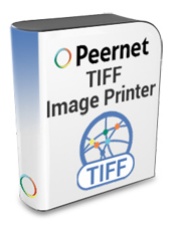The History of TIFF and Why You Should Use It
The TIFF file format was born out of a specific need, and has since been developed and adopted to the point that it serves as a solution to several. Its history begins back in the 1980s, when the personal computer was still in the early stages of its rise into an essential part of our everyday lives.
Although there may not have been a computer in every household yet, many businesses were starting to integrate their use into their operations in some way or another. Printers, of course, were already ubiquitous, but in time, it became clear that there was going to be a significant need for physical, hard copies to be transferred on to the computer. The TIFF file format was developed with this in mind: a standard format to be used in conjunction with document scanners.
As technology quickly evolved, the TIFF format underwent several revisions to accommodate grayscale, and then full color. The format’s flexibility as an image format that’s ideal for maintaining document formatting has seen it adopted across multiple industries as the format of choice. For as much as computers have changed in the past 30 years, the versatility of TIFF has allowed it to flourish as a reliable format that’s still commonly used today.
Why Use TIFF?
There are a number of reasons why businesses choose TIFF as a primary format for document management and digital record keeping. Some of the key points include:
- TIFF is a widely-adopted file format, so it’s viewable on virtually any computer.
- Because it is an image format, the formatting of any documents or records is always maintained across all devices, operating systems, screen sizes, etc.
- TIFF has a variety of compression options, so the outputted file can be compressed in size while still maintaining a high-quality appearance.
- TIFF is a secure document format – links and hidden data cannot be embedded in it, making it a secure choice for companies dealing with customer records or sensitive information.
- Because of TIFF’s high-quality output, they are somewhat more difficult to alter than other image formats, adding another layer of security.
- You are able to merge multiple pages into one TIFF file.
Who Uses TIFF?
Organizations in a wide variety of industries use the TIFF file format in their daily operations.
- Because of its high quality, TIFF is a preferred format for those in the publishing profession;
- Industries with a need to store substantial client documents/records, like the medical profession;
- Businesses looking for a more secure alternative to PDF format documents;
- Businesses whose daily operations require a lot of fax transmissions.
How to Convert to TIFF:
Depending on the size, scope and needs of your business and organization, Peernet offers a variety of products that could be right for you. Our TIFF Image Printer offers fast and easy conversions from a wide range of formats to TIFF, and is as simple to use as printing a document.
For enterprise organizations, our Document Conversion Service may be the right product – a high-volume, batch document converter that runs 24/7.
View our products page to get an idea of which document conversion software will work well for your business needs, and if you have any further questions, we’re happy to answer them: contact us today.




